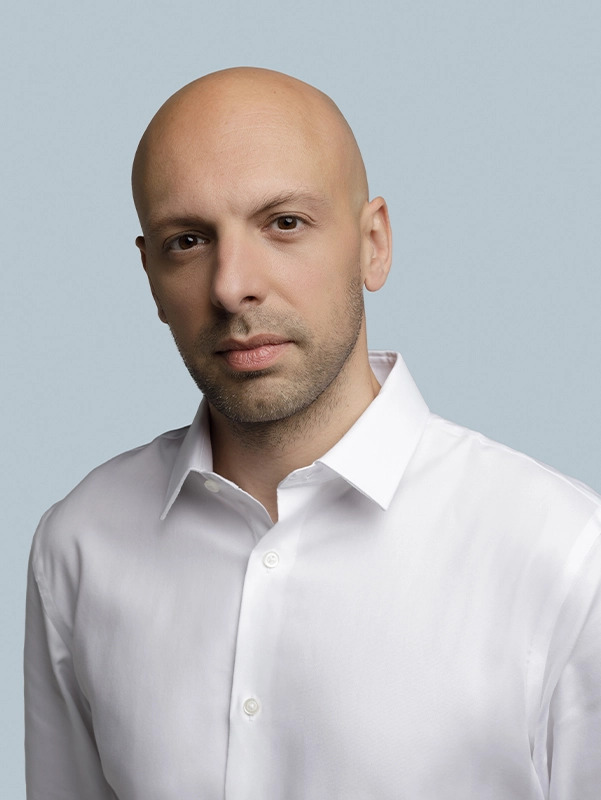When Regeneron announced a $500 million corporate venture capital fund last week, it was the first time in years that a storied large pharma had done so.
The company said it’s investing $100 million a year for five years.
 Michael Aberman
Michael Aberman“Our goal is to cultivate an ecosystem where the next generation of biotech companies can thrive, drawing on the lessons learned and successes achieved at Regeneron and throughout our careers,” Michael Aberman, one of the fund’s leaders, said in the press release at the time.
Regeneron’s move into corporate venture capital emphasizes how integral these funds are to nascent science and startups, and it’s another reminder that a check from a corporate VC increases the likelihood of a biotech’s M&A exit. Many of the largest pharma companies operate their own funds, though few new ones have launched in recent years, and insiders say they are more willing to take on risky science than traditional VC firms.
“The Regeneron example is one where a growing biopharma business is realizing that accessing innovation with this tool is potentially a really useful way of accessing innovation,” Peter Dudek, president of Merck’s MRL Ventures Fund, said in an interview with Endpoints News.
 Ariana Ognibene
Ariana OgnibeneCorporate venture units took part in 36% of biopharma venture-backed deals in the US, Europe and UK last year, said Ariana Ognibene, an SVP at Silicon Valley Bank who focuses on CVCs in life sciences. That’s on par with the 40% average over the past five years.
“Corporate venture in biopharma really is one of the central collaborating sources of capital in the ecosystem,” said Jonathan Norris, managing director in HSBC’s innovation banking unit.
A longstanding role
Corporate venture capital funds have long been a cornerstone of drug development, in part because they are willing to take risky bets. Most large pharma companies including Johnson & Johnson, AbbVie and Merck, run their own VCs. Nine of the 10 largest pharma companies have one, per Brad Robling, who runs Lilly Ventures, which has about $2.5 billion in assets under management.
Lilly has tested several different approaches to investing. It launched, spun out and then wound down Lilly Ventures. It created a China-focused fund called Lilly Asia Ventures, which now operates independently and has attracted multiple limited partners. In recent years, Lilly began venture investing in-house again as part of a broader approach to support early-stage biotechs.
Prior to the launch of Regeneron Ventures, few drugmakers have opened CVC funds in recent years. Ono Pharmaceutical did so in 2020 with a $100 million fund that it then doubled last year, and Chugai Pharmaceutical disclosed a $200 million arm in June.
 Lucio Iannone
Lucio Iannone“I’ve seen some Japanese, Korean and Taiwanese pharma companies that are exploring the idea instead of investing directly into other VC funds,” said Lucio Iannone, head of health venture investments at Leaps by Bayer. “I was expecting Biogen to create something since they need some additional innovation and diversification. Maybe Moderna.”
Industry insiders are uncertain whether more mid-size biopharmas will join the corporate venture investing field.
“As 50 years have gone by, we’ve seen this come in and out of favor depending on the strategies of companies. But one thing that’s clear and consistent within Johnson & Johnson is that this is something that is an essential element to our innovation strategy,” said Chris Picariello, president of JJDC, the longest-running CVC across any industry.
 Samantha Palmer
Samantha PalmerIt’s invested more than $3.5 billion in the last decade, across both therapeutics and medical technology. Amgen has been quite active, too, with more than $1 billion deployed in its 20 years, global head Samantha Palmer said, and the fund has looked at more than 300 opportunities in the first quarter of this year alone.
Merck’s fund, which is 10 years old, has invested in at least two biotech startups — Caraway Therapeutics and Imago BioSciences — that have since been acquired by the drugmaker.
GSK, meanwhile, separated its venture unit in 2020. Named SR One, the firm recently closed on its Opportunities Fund at an undisclosed sum smaller than last year’s $600 million to back existing portfolio companies and others, CEO Simeon George said.
The ‘bleeding edge of risk’
As biotech startups tread water in a difficult financing environment, CVCs have helped keep some afloat, in part because of their ability to take on more risk than other investors. It’s good business for large drugmakers to invest in new scientific ideas from which they could benefit one day.
 Peter Dudek
Peter Dudek“For Merck, the R&D group wants to be on the compelling edge of R&D,” Dudek said. “The classical business development group wants to be at the cutting edge. And the venture group, we want to be at the bleeding edge on that risk spectrum.”
A CVC typically has only one limited partner: the parent company. That means they can take different types and greater levels of risk without thinking about the LP mandates that can bog down a traditional VC fund, insiders say.
Corporate venture arms “didn’t know how to invest alongside venture groups” in the past, Dudek said, but that’s changed over the years as they’ve taken part in more deals, a sentiment echoed by Iannone.
 Jonathan Norris
Jonathan Norris“They understand where the dry spots are in capital to support these companies moving forward in the development of their technology, and they fill those gaps,” HSBC’s Norris said. “There is obviously a financial part of that. They want to get good returns, but it’s almost a philanthropic idea of supporting the ecosystem and making sure that really great technologies continue to get the funding they need.”
Corporate arms have a “long-term, patient capital” focus, Sanofi Ventures managing director Jason Hafler said.
 Chris Picariello
Chris PicarielloThat’s especially critical in an industry that can require at least a decade of work to turn nascent research into a late-stage drug. Sanofi’s venture arm did nine deals last year, a pace it’s on track for again this year, said Paulina Hill, a partner at the fund.
“Even through the biggest bull market and then the bear market that we’ve seen, JJDC has continued our investment pace,” Picariello said. “We don’t let the market trends drive how we’re investing in companies.”